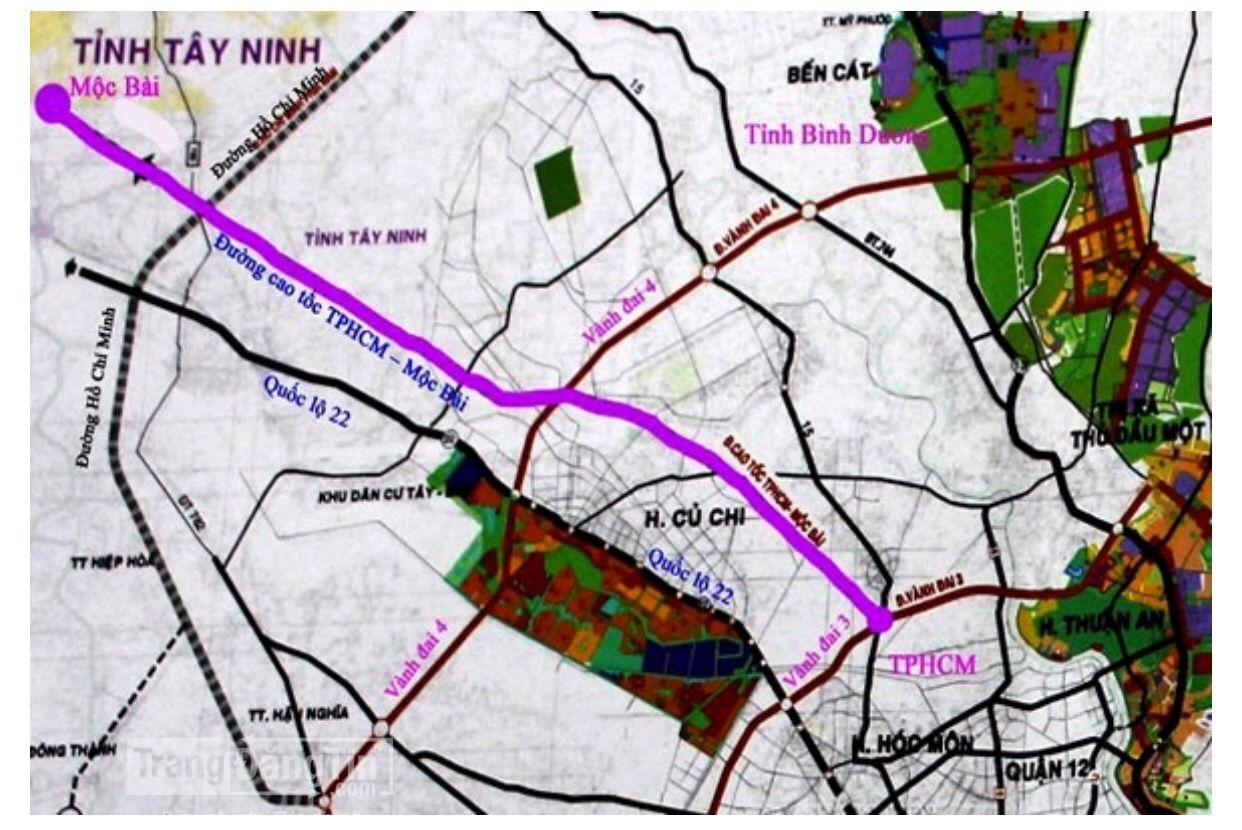
The HCMC government has proposed the prime minister and the Ministry of Transport assign it control over fundraising, deploying and managing the operations of the HCMC-Moc Bai expressway, connecting the city with Tay Ninh Province.
A representative of the HCMC government office confirmed on September 9 that the city had worked with the Tay Ninh government before making the proposal, news site Mot the gioi reported.
The 53.5-kilometer expressway is designed to start at Ring Road No. 3 in HCMC’s Hoc Mon District and end at National Highway 22 in Tay Ninh’s Moc Bai International Border Gate area.
The project will be executed in two phases under the public-private partnership format. In the first phase, the expressway will be built in two sections: a four-lane section running from HCMC to Trang Bang and another four-lane section from Trang Bang to Moc Bai.
In the second phase, the HCMC-Trang Bang section will be upgraded to have eight lanes and the Trang Bang-Moc Bai section will have six lanes.
The HCMC and Tay Ninh governments will be responsible for site clearance and compensation for the land for the project in their localities.
HCMC also proposed the prime minister allow the site clearance work at intersections of the expressway with Ring Roads No. 3 and 4 and other sites to include the development of parking lots, logistics services and commercial centers. Residential areas should also be built near these intersections to create revenue for localities that the expressway will pass through.
At a meeting between leaders of the HCMC and Tay Ninh governments in April, a representative of the HCMC Department of Transport stated that the first phase of the project would need an estimated investment of VND10.7 trillion (US$461.1 million), with 51% of it being sourced from the investor. As for the balance, the Ministry of Transport planned to use South Korea’s official development assistance loans.
The HCMC-Moc Bai expressway, when in place, will enhance the connection between the southern key economic zone and the East-West Economic Corridor, thus promoting the region’s socioeconomic development.
The expressway is also expected to ease traffic congestion on National Highway 22 and assist with the development of industrial parks and export processing zones along the expressway, especially the Moc Bai Border Gate Economic Zone.

















